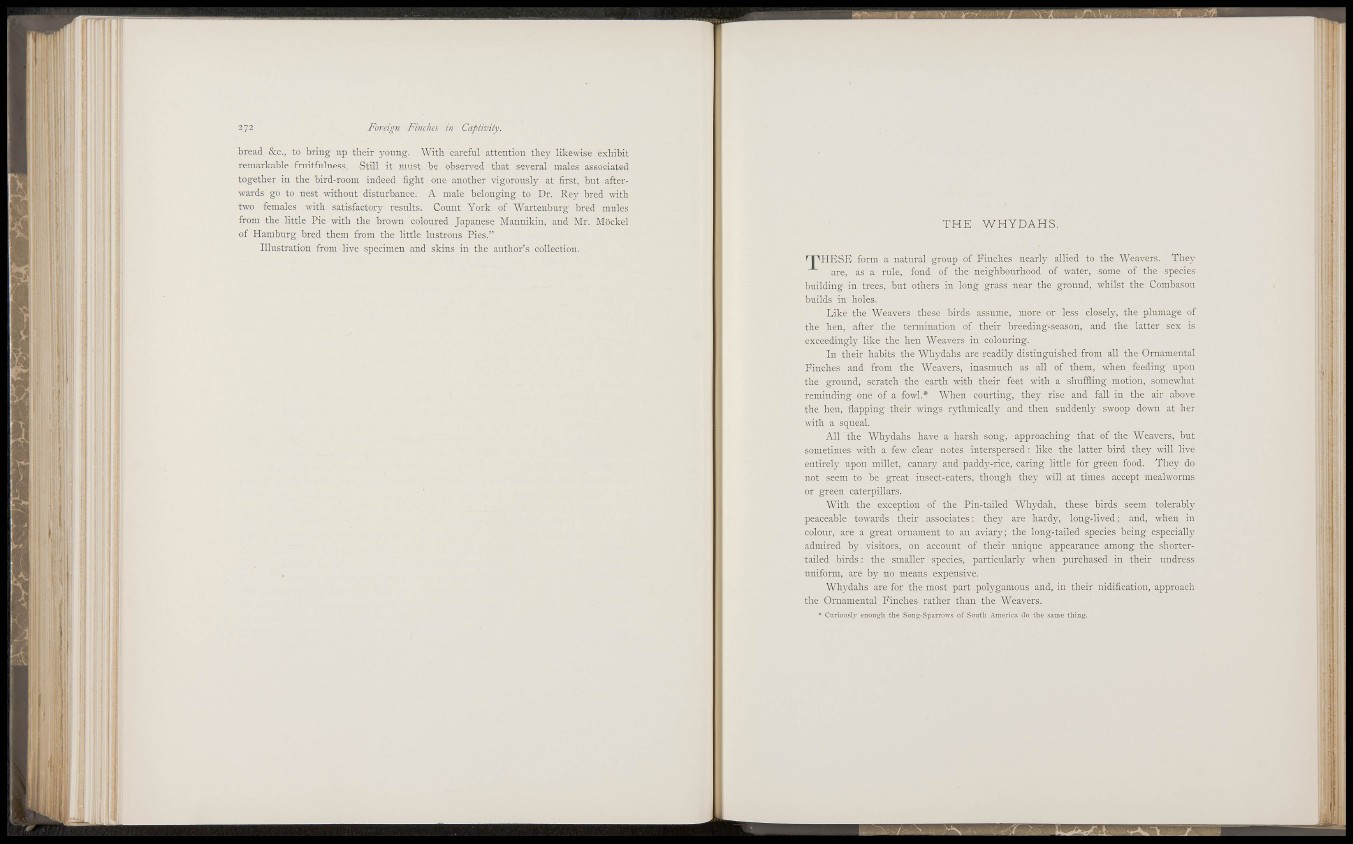
I 1.
y..; i
' ^Vi f
: tí í
Liiiíl
' i]
Foreign! Finches in Captivity.
bread &c., to bring up their young. With careful attention they likewise exhibit
remarkable fruitfulness. Still it must be observed that several males associated
together in the bird-room indeed fight one another vigorously at first, but afterwards
go to nest without disturbance. A male belonging to Dr. Rey bred with
two females with satisfactory results. Count York of Wartenburg bred mules
from the little Pie with the broTO coloured Japanese Mannikin, and Mr. Mockel
of Hamburg bred them from the little lustrous Pies."
Illustration from live specimen and skins in the author's collection.
THE WHYDAHS.
l ^ H E S E form a natural group of Finches nearl}' allied to the Weavers. They
are, as a rule, fond of the neighbourhood of water, some of the species
building in trees, but others in long grass near the ground, whilst the Conibasou
builds in holes.
Like the Weavers these birds assume, more or less closely, the plumage of
the hen, after the termination of their breeding-season, and the latter sex is
exceedingly like the hen Weavers in colouring.
In their habits the Whydahs are readily distinguished from all the Ornamental
Finches and from the Weavers, inasmuch as all of them, when feeding upon
the ground, scratch the earth with their feet with a shuffling motion, somewhat
reminding one of a fowl.* When courting, they rise and fall in the air above
the hen, flapping their wings rythmically and then suddenly swoop down at her
with a squeal.
All the Whydahs have a harsh song, approaching that of the Weavers, but
sometimes with a few clear notes interspersed : like the latter bird they will live
entirely upon millet, canary and paddy-rice, caring little for green food. They do
not seem to be great insect-eaters, though they will at times accept mealworms
or green catei-pillars.
With the exception of the Pin-tailed Wliydah, these birds seem tolerabl}'
peaceable towards their associates: they are hardy, long-lived; and, when in
colour, are a great ornament to an aviary; the long-tailed species being especialljadmired
by visitors, on account of their unique appearance among the shortertailed
birds: the smaller species, particularly when purchased in their undress
uniform, are by no means expensive.
Whj'dahs are for the most part poljrgamous and, in their nidification, approach
the Ornamental Finches rather than the Weavers.
* Curiou.sly eiioni^li the Kong-SparroAY.s of South AmericEi do the same thin^.
Í • Í
j., I
•I
IÍ ;, •
lili.
! t r
• I ,! i
11
I ' '
I ' M
- i !
h ÍI
Í5 "